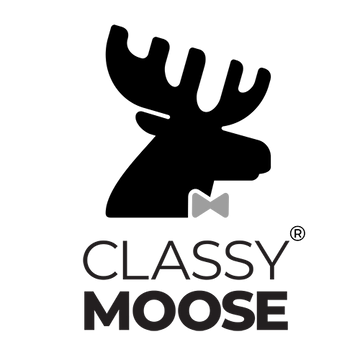
Dangerous Goods Demystified: What Each Class Label Really Means
Understanding Dangerous Goods Labels
Dangerous goods labels are essential for identifying hazardous materials during transport. Each label corresponds to a specific hazard class, such as:
- Class 1: Explosives
- Class 2: Gases
- Class 3: Flammable Liquids
- Class 4: Flammable Solids
- Class 5: Oxidizing Substances
- Class 6: Toxic and Infectious Substances
- Class 7: Radioactive Materials
- Class 8: Corrosive Substances
- Class 9: Miscellaneous Dangerous Goods
These labels feature standardized symbols and color-coded backgrounds for quick hazard identification. For instance, a red background with a flame symbol indicates flammable materials, while a yellow background with a flame over a circle denotes oxidizing substances.


This class encompasses substances and articles that are capable of undergoing a rapid chemical reaction producing gas and heat. Materials include:
- Dynamite
- Fireworks
- Ammunition
- Blasting agents
These materials are classified based on their potential to cause explosions, with divisions ranging from mass explosion hazards to minor explosion hazards.



Class 2: Gases
Gases are substances that are in a gaseous state at 50°C or less and 101.3 kPa of pressure. This class includes:
- Division 2.1: Flammable gases (e.g., propane, butane)
- Division 2.2: Non-flammable, non-toxic gases (e.g., nitrogen, helium)
- Division 2.3: Toxic gases (e.g., chlorine, phosgene)
These gases pose risks such as flammability, toxicity, or asphyxiation.

This class includes liquids with a flashpoint of 60°C or less. Materials include:
- Gasoline
- Paint thinner
- Alcohol
- Acetone
These substances are highly flammable and require careful handling during transportation.



Class 4: Flammable Solids; Self-Reactive Substances; Substances Which, in Contact with Water, Emit Flammable Gases
This class is divided into three divisions:
- Division 4.1: Flammable solids (e.g., matches, magnesium)
- Division 4.2: Substances liable to spontaneous combustion (e.g., phosphorus)
- Division 4.3: Substances which, in contact with water, emit flammable gases (e.g., sodium, potassium)
These materials can ignite spontaneously or react with water to produce flammable gases.


Class 5: Oxidizing Substances and Organic Peroxides
This class includes:
- Division 5.1: Oxidizing substances (e.g., hydrogen peroxide, potassium nitrate)
- Division 5.2: Organic peroxides (e.g., benzoyl peroxide, methyl ethyl ketone peroxide)
These substances can cause or enhance the combustion of other materials.


Class 6: Toxic and Infectious Substances
This class is divided into two divisions:
- Division 6.1: Toxic substances (e.g., cyanides, pesticides)
- Division 6.2: Infectious substances (e.g., viruses, bacteria)
These materials can cause death or serious injury if swallowed, inhaled, or upon skin contact.



Class 7: Radioactive Materials
This class includes materials that emit ionizing radiation. Examples are:
- Uranium
- Plutonium
- Cobalt-60
These materials are used in medical treatments, industrial applications, and nuclear power generation.
Exemple of products: smoke detectors, medical isotopes

This class includes substances that cause destruction of human skin or corrode metals. Materials include:
- Sulfuric acid
- Sodium hydroxide
- Hydrofluoric acid
These substances can cause severe damage upon contact.
Exemples of products: Automotive batteries and general batterie, drain cleaners

Class 9: Miscellaneous Dangerous Goods
This class includes materials that present a danger during transportation but do not fall into the other classes. Examples are:
- Lithium batteries
- Asbestos
- Dry ice
These materials require special attention due to their unique hazards.
Exemple of products: Lithium-ion batteries, dry ice, asbestos, airbags
Compliance with TDG Regulations
Under the TDG Regulations, it's mandatory to label all dangerous goods containers, including small means of containment (450 liters or less), with the appropriate hazard class label. Each label must be at least 100 mm in length, with a line running 5 mm inside the edge. In cases where the container's size or shape doesn't accommodate this, the label size may be reduced but must not be less than 30 mm per side.
Proper labeling ensures that handlers, transporters, and emergency responders can quickly assess the risks associated with the materials, facilitating safer handling and response in case of incidents.
Importance for Reactive Substances
Certain substances, known as reactive substances, can pose additional risks during transportation. These materials may react violently under specific conditions, such as exposure to water or air. For example, Class 4.3 labels identify substances that are dangerous when wet, indicating materials that can release flammable gases upon contact with water.
Using the correct labels for reactive substances is crucial to prevent accidents and ensure safe transport.
Why Choose Classy Moose® Labels?
- Comprehensive Coverage: We offer labels for all nine TDG hazard classes, ensuring you have the right label for every material.
- High Visibility: Our labels are designed for maximum visibility, aiding in quick hazard identification.
- Durability: Made to withstand various environmental conditions, our labels remain intact and legible throughout the transportation process.
- Compliance Assurance: By using our labels, you align with TDG Regulations, reducing the risk of non-compliance penalties.
Ensure the safety and compliance of your shipments by selecting the appropriate Dangerous Goods Labels from our collection. Visit our Dangerous Goods Labels Collection to browse our full range and make your purchase today.
